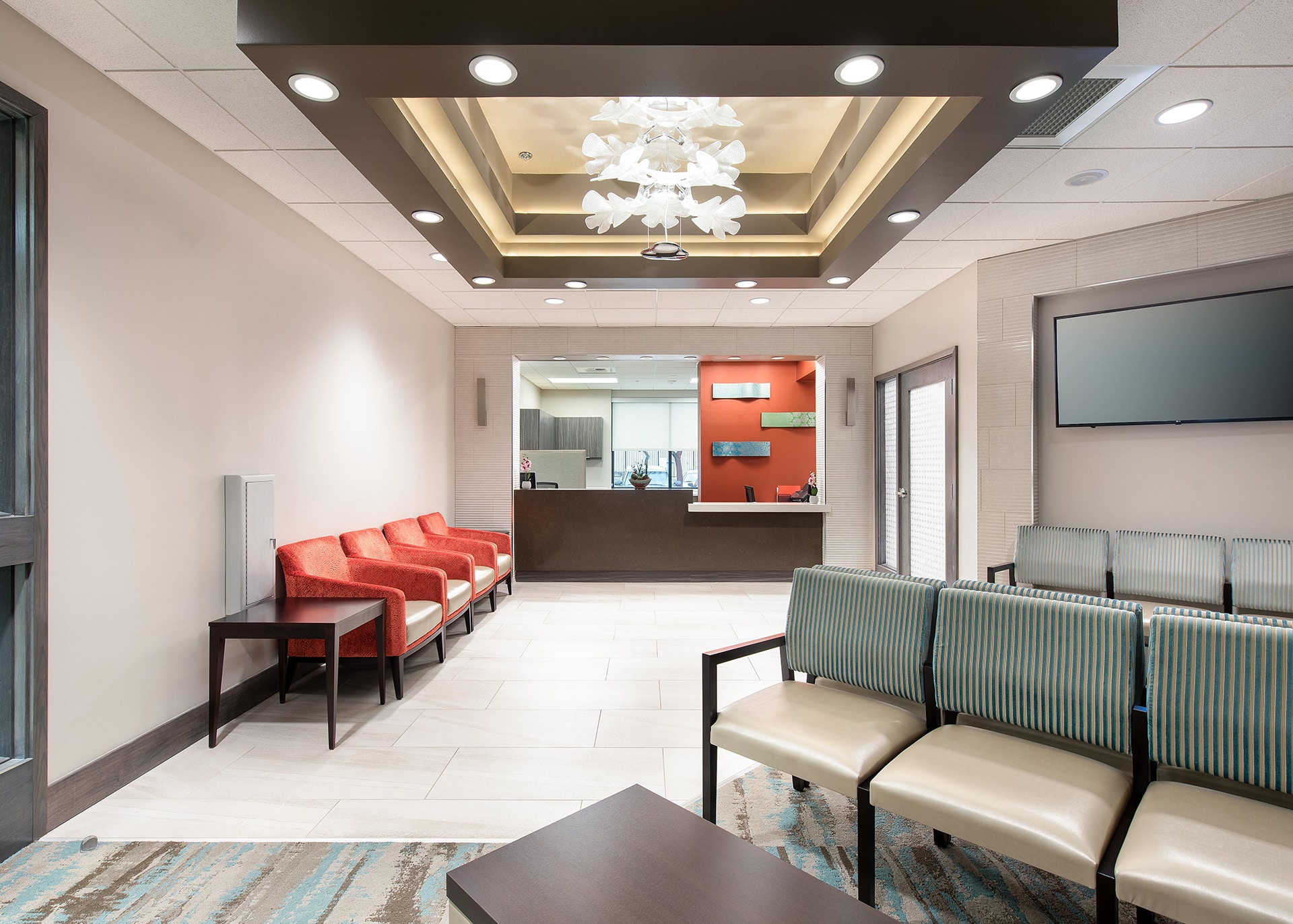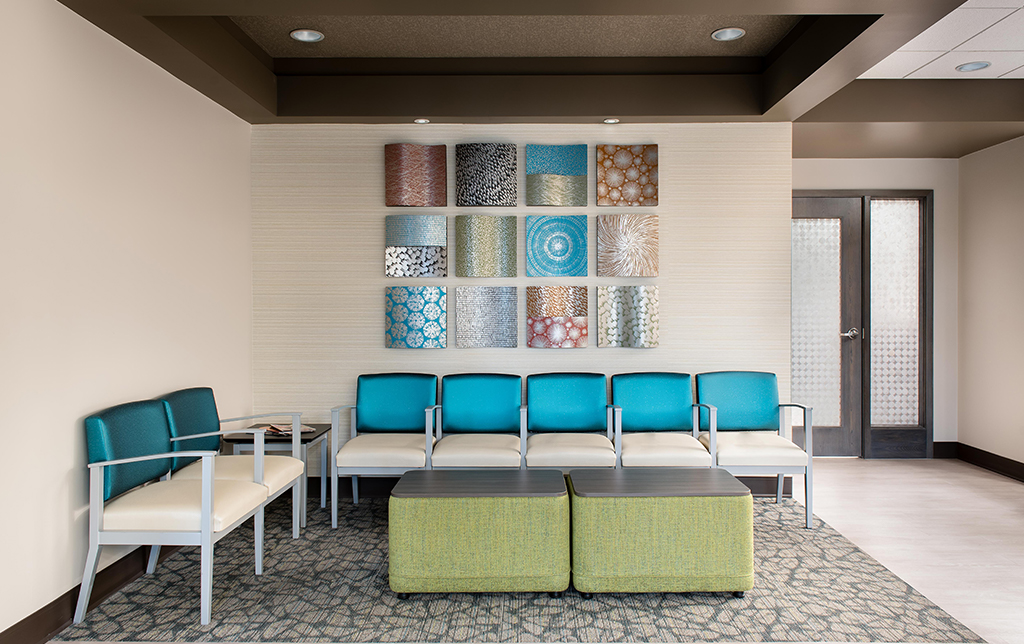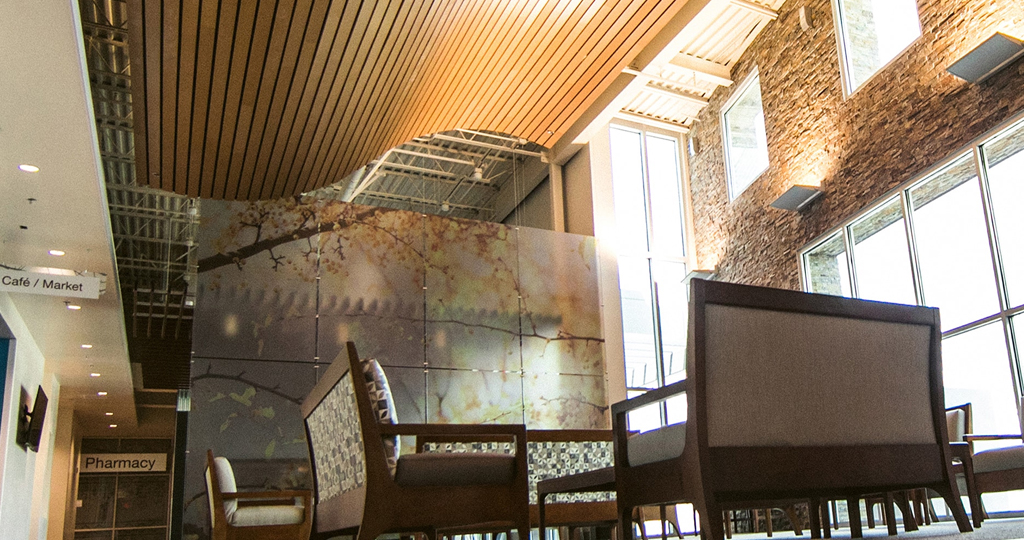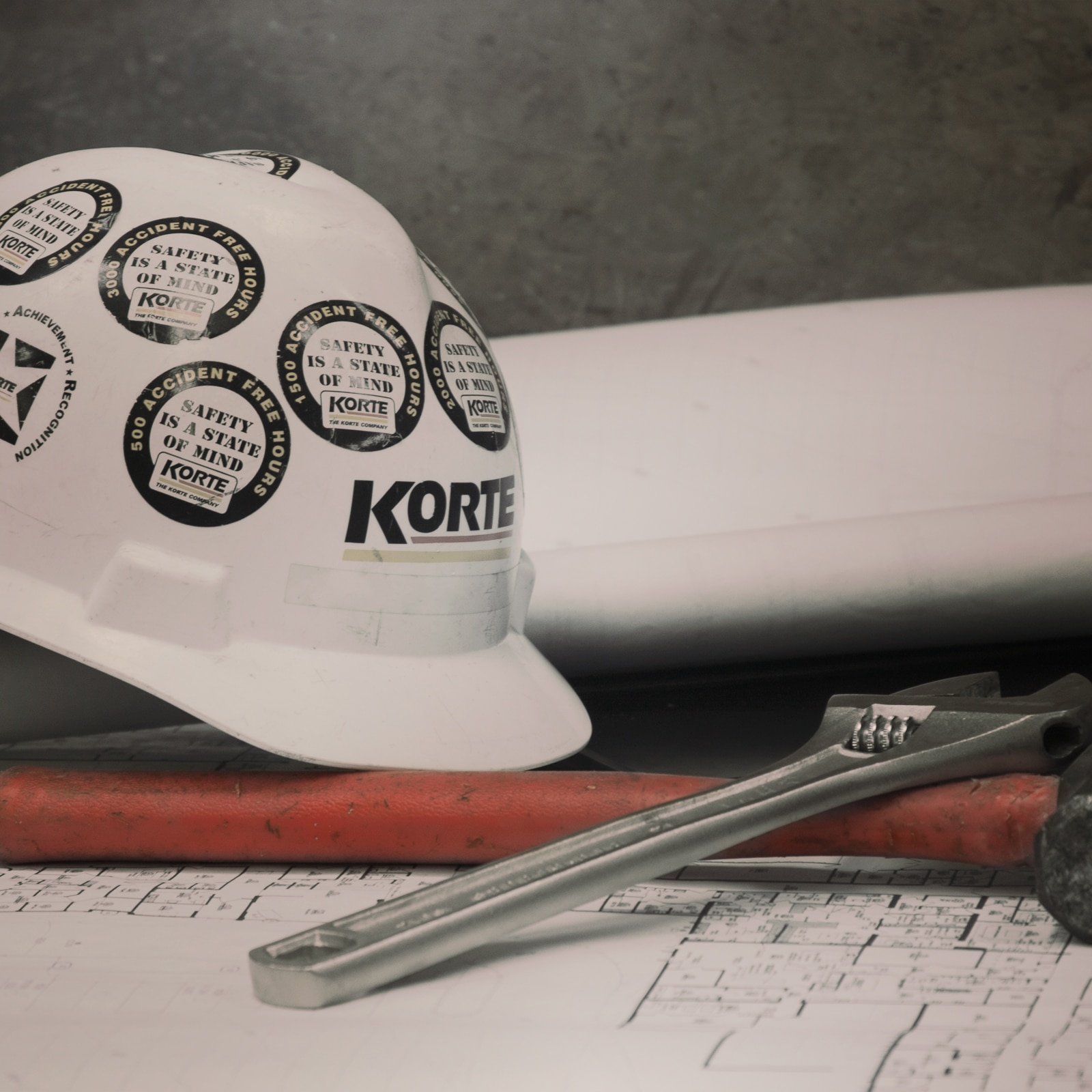Healthcare interior design projects pose unique challenges for design teams. Many of the finishes chosen for a new, expanded or renovated healthcare facility are more than just passive elements that create a “look and feel” of a facility. They contribute to the core mission of the facility: Delivery of care to patients.
It’s not that these spaces cannot be appealing. Examples abound of healthcare facilities striking in their beauty. The idea, though, is that healthcare interior designers must first prioritize design elements that promote patient care.
The unique factors design teams must consider for these projects are highlighted below.
Code compliance
For healthcare facilities, code compliance is not negotiable. The protection of patients, visitors and facility employees is paramount, so interior design initiatives must first address code compliance. No exceptions.
While any number of unique local codes or ordinances can impact interior design decisions, most healthcare facilities in the U.S. must comply with National Fire Protection Association codes. Those include NFPA 101 Life Safety Code and NFPA 99 Health Care Facilities Code.
Design teams must be aware of the authority having jurisdiction (AHJ) over a given project ahead of time. In some states, the state fire marshal is the AHJ. In large cities, local fire department personnel usually assume that role.
Teams should also know which editions of the codes are effective in a project’s jurisdiction. That’s because some jurisdictions don’t always enact new codes each time NFPA standards are updated.
One of the key benefits of choosing Design-Build for your healthcare construction project is improved information sharing among teams. Interior designers stay in close contact with project managers and have a running start as they ensure all applicable local rules are followed.
Evidence-based design
Picture a 1950s-era hospital. With that image in mind, it’s no wonder generations of patients avoided healthcare facilities to the point of skipping doctor visits.
Now, picture a modern facility. With ample natural light, soft colors, garden and water features and an inviting look and feel, some don’t even look like hospitals at all.
Modern healthcare interiors are created on the premise of evidence-based design, or the use of credible research to influence built environments so that patient outcomes improve. The research becomes more and more convincing all the time. It isn’t just medicine that makes you feel better.

The principle of healing architecture has arisen from research assessing how patient outcomes improve when certain design choices are made. Consider these findings:
- An experiment conducted by neuropsychiatric providers in Italy found that patients suffering from bipolar disorder spent an average of four fewer days in the hospital when they were assigned east-facing rooms that captured morning sunlight.
- After shadowing the staff of the neonatal intensive care unit in a Swedish hospital, an architect redesigned the space. After implementation, hospital stays for premature infants measurably shortened.
- A study of aggressive patients showed that doctors reduced sedative injections by 70% for patients whose rooms featured posters depicting scenes of nature compared to those whose rooms’ walls were blank.
Cleanability
Somewhat related to evidence-based design is cleanability, arguably the most important defense against spreading diseases in spaces inherently full of them.
Paying close attention to the design of the furniture you choose will go a long way toward reducing surface contamination that can lead to healthcare-associated infections (HAI). Furnishings and finishes in patient rooms are at especially high risk of harboring pathogens. Surfaces with seams and joints provide irresistible homes for potentially infectious bacteria.

It’s important that design teams select surfaces that are easily wiped down by facility staff. Wood, for example, typically is not ideal in high-risk spaces. It tends to be porous and its finishes can quickly be stripped away with repetitive cleanings. It’ll work for low-traffic areas like administrative offices, but not so much for patient rooms.
Advances in textile coatings have allowed designers to select antimicrobial furnishings that fight the spread of disease. Companies like Nano-Tex and Crypton now manufacture textile coatings that fight stains and actively combat microorganism growth.
Design unity
Design unity refers to a facility that maintains a consistent look and feel among its separate departments of sectors. In a time when most healthcare construction projects are expansions or renovations, maintaining continuity across “old” and “new” portions of healthcare facilities is critical.
Achieving this cohesion can be difficult in healthcare facilities because they feature so many different spaces, from patient rooms and labs to lobbies, offices and maintenance areas. But it’s important to remember the overall image of your project. More than just walls and a roof, your healthcare facility represents your brand. Do your interior design decisions reflect your cohesive vision?
Case study: Montezuma Creek Health Center
The Montezuma Creek Health Center, a 51,576-square-foot health clinic we just finished for the Utah Navajo Health System, illustrates the principle of design unity.

On the first floor are 36 exam rooms, two treatment rooms, a lab and a dental suite. Administrative offices, conference rooms, an employee fitness area and an outdoor patio make up the second floor. As you can see, maintaining consistency in design would be difficult across the variety of spaces in the clinic.
We looked outdoors for inspiration. The clinic sits near the banks of the San Juan River in the rugged Southwestern Utah desert. We brought elements of the land indoors to make the space feel like it belonged. Features included:
- A dark red and brown color theme on finishes throughout the clinic to match the area’s red rock terrain.
- Furnishings with color-accented fabric matching the color codes assigned to the facility’s separate departments.
- Incorporation of native desert grasses and shrubs to bring the striking exterior environment into the facility.
Budget considerations
The bottom line is a major factor on every healthcare construction project. And while our Design-Build method is meant to cut construction costs, cost cutting must be done thoughtfully.
When it comes to healthcare interior design, our team follows a pretty simple mantra: Don’t give people shoddy furniture.
Here’s what we mean: You get what you pay for. And in healthcare, the way an organization is perceived is just as important as how well it delivers care. If you’re trying to choose between something comfortable and well-built versus something cheap, remember that a good reputation among patients, visitors and staff is practically priceless.
That said, there are ways to reduce costs on furnishings. If your project involves the renovation of an existing healthcare facility, it’s important to thoroughly evaluate any existing inventory that can be repurposed and incorporated into your new design layout. If this existing inventory still contributes to the design unity of the space—and it’s still in good shape—consider reusing it.
Then, choose what to do with the money saved. You can either hold onto it and lower the ultimate cost of the project, or allocate it somewhere else to increase the overall project value.
If you’re starting a new hospital development from scratch, think in terms of product life cycle and design versatility. Will a piece maintain its functionality if it needs to be moved? Will it need to be replaced more often than a slightly more expensive one? Are replacement parts widely available? How well does the piece hold up against frequent cleaning?
Investing in cleanable, high-quality furnishings up front can result in dramatic savings down the road.
Smarter design means smarter care
Healthcare facility owners know first-hand that the industry is changing. Both patient preferences and government policy are in flux. It’s critical that owners understand the impact interior design can have on patient outcomes and visitor perceptions.
If they get it right, they’ll gain the competitive edge.
Building better healthcare is a comprehensive process. There are challenges around every corner. But we see them as opportunities. From groundbreaking to final handoff, The Korte Company stays committed to making construction easier. To us, that’s building smart.
To see how interior design fits into the broader healthcare construction process, read our in-depth guide to managing healthcare construction. Want to talk about an interior design challenge at your site? Contact us now.
